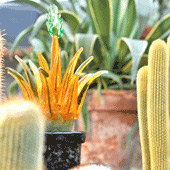NPR:
The old farmer stereotype of a white guy in overalls has at least one truth to it: The majority of farmers in the U.S. are white males. Yet a growing number of women are joining their ranks.
Women now run about 14 percent of the nation’s farms, up from only 5 percent in the 1980s. Most female-run farms tend to be smaller and more diverse, and many are part of the burgeoning organic and local foods movement.

